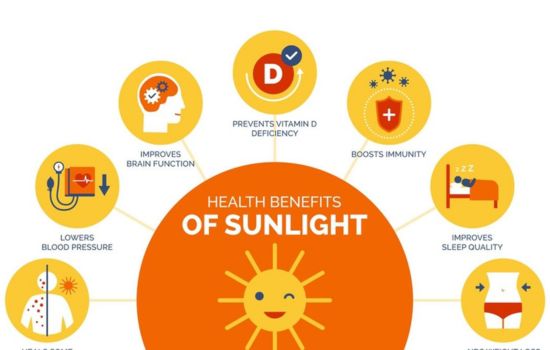As the “sunshine vitamin,” vitamin D is essential for immune system support, inflammation reduction, and bone health. Despite its significance, a lack of vitamin D affects many people globally because of insufficient food intake and sun exposure. The top six methods for ensuring you get enough vitamin D for good health are listed below.
Table of Contents
1. Exposure to Sunlight
Sunlight exposure is the most organic way to get vitamin D. Your skin produces Vitamin D3, an essential type of this nutrient when exposed to sun UVB rays.
Ways to Increase Your Sunlight Exposure:

Time: Aim for noon sun, which is often from 10 a.m. to 3 p.m., when UVB rays are at their strongest. The best time to synthesize vitamin D is during this phase.
Duration: It’s usually enough to get 10 to 30 minutes of sun exposure several times a week, though this can change depending on factors like skin type, age, region, and season.
Skin Exposure: Be careful not to burn yourself when you expose big sections of your body, such as your arms, legs, and back. After the first few minutes of exposure, sunscreen is crucial for preventing skin damage. However it’s crucial to weigh the dangers of skin cancer against sun exposure, and people with darker skin might need to spend more time in the sun to get enough vitamin D.
2. Dietary Sources
Including foods high in vitamin D in your diet is a good method to increase your levels, particularly in the months when there is less sunlight.
Key Vitamin D-Rich Foods:

Fatty Fish: Sardines, mackerel, and salmon are good sources. For example, 3.5 ounces of cooked salmon can supply around 570 IU of vitamin D.
Dietary sources: One tablespoon of cod liver oil can provide up to 1,300 IU, making it one of the most effective dietary sources.
Egg yolks: Depending on the chicken’s diet and quantity of sun exposure, they may or may not contain trace quantities of vitamin D.
Foods fortified: To assist avoid deficiencies, a lot of foods, including milk, orange juice, and cereals, are fortified with vitamin D.
3. Supplements:
Taking vitamin D supplements is a dependable way to make sure you meet your daily needs, particularly if you don’t get enough sun exposure or eat a diet high in vitamin D.
Correct Supplement: Vitamin D3 vs. D2: Vitamin D3 is more effective than D2 at raising and maintaining overall levels of the vitamin.
Dosage: The Recommended Dietary Allowance (RDA) for most adults is 600 to 800 IU per day, but higher doses may be needed for those with deficiencies or particular health conditions.
4. UV Lamps and Bulbs:
For people who live in areas with long winters and little sunlight, UV lamps and bulbs can be a useful substitute.
Using UV Lamps:
Type: Select lamps that produce UVB light, as this is essential for the synthesis of vitamin D.
Safety: To prevent burns or skin damage, according to the manufacturer’s instructions. A few times a week, 15 to 20 minutes of exposure is usually sufficient.
5. Sun-Exposure Mushrooms:
In certain cases, exposure to sunshine or ultraviolet radiation can produce Vitamin D2 from mushrooms.

Increasing the Vitamin D Content of Mushrooms:
Sunlight Intake: Before eating, let mushrooms sit in the sun for thirty to sixty minutes. Their vitamin D levels can be greatly increased by following this easy procedure.
6. Adopting a Healthier Lifestyle:
Your vitamin D levels can be indirectly supported by leading a healthy lifestyle.
Tips for a Vitamin D-Friendly Lifestyle:
Outdoor Activities: Take part in outdoor activities, especially during the hours of most sunlight, such as jogging, walking, or sports.
Balanced Diet: In addition to consuming foods high in vitamin D, maintain your general health by eating a balanced diet that also includes calcium and magnesium, which help your body absorb and use vitamin D.
Frequent Examinations: Regular blood tests can be used to check your vitamin D levels, particularly if you are at risk of deficiency. Making educated choices on dietary requirements and supplemental needs is aided by this.
Conclusion:
Getting enough vitamin D is essential for keeping one’s health in check. You can efficiently increase your levels of Vitamin D by utilizing a combination of sunlight exposure, food sources, supplements, UV lamps, sunlight-exposed mushrooms, and a healthy lifestyle. Always take into account personal characteristics while selecting the ideal approach for you, such as skin type, location, and medical conditions. Speaking with a medical expert can also offer you individualized advice on how to maintain year-round healthy vitamin D levels.

